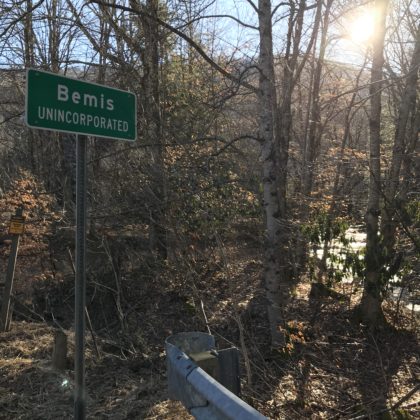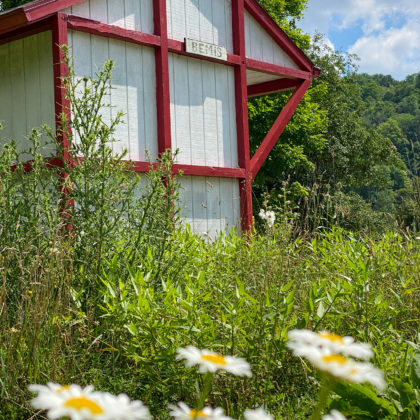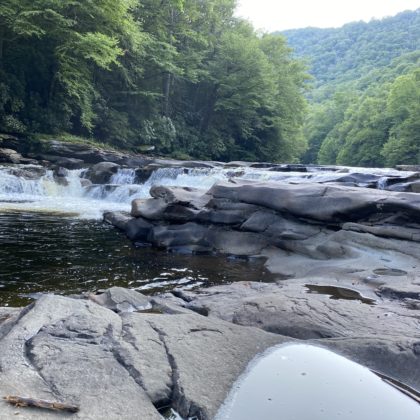Bemis, West Virginia
They say Bemis, West Virginia is a state of mind and it must be true because the former mining town has boomed into a camper’s vacation paradise. Before Bemis was Bemis, it was Fishing Hawk, a railroad camp where laborers laid tracks to connect Elkins and Durbin. In 1903, the then-town of Fishing Hawk was established and the first post office opened its doors, according to Calvin Shifflett, a resident who runs the area’s only remaining post office in Glady.
The Rumbarger Brother’s Lumber Co. was established after Jacob Rumbarger bought the land to work with his sons Jacob Jr., Robert, John and Frank. The Rumbarger boys ran a double band mill in a town where drinking was strictly prohibited. “This was a pretty quiet place at that time,” Shifflett said. But all of that was about to change. In 1906, J.M. Bemis bought the town of Fishing Hawk, sawmill and all, for $600,000. According to Shifflett, Bemis paid $100,000 down and agreed to pay out the remaining $500,000 in lumber sales.
Bemis was a Pennsylvania resident who came to the region to open Bemis and Son Lumber Co., and it wasn’t long before Fishing Hawk took the name of its owner. Of Course, Bemis did not have the same opinion about alcohol as Rumbarger and saloons were no longer banned. Over the next 40 to 50 years, the town of Bemis thrived. At one point, there were two coal mining operations and a lumber mill to fuel the economy. At that time, there were also three stores, a boarding house, a restaurant, a post office, a 10-year schoolhouse that employed five teachers, a dance hall, and a church.
Shifflett owns a small general store and tavern in Bemis but, at one time there was a coal company store as well as a department store where people could get just about anything. “You could get a suit of clothes, animal feed, shot guns, groceries, everything.” There was also a Wellshonce store and the Bemis Restaurant. Shifflett even said he has a class portrait from 1939 that has about 40 students in it. “And I know some of the kids were not in the picture because some of my brothers were not in it,” Shifflett said. He grew up in Bemis with five other brothers and there was always something to get into. “There was something going on at school every week night and our Mom and Dad played music. Most of the kids in Bemis played music.” Shifflett also has a photo of the Bemis String Band from 1939. The band consisted of ninth and tenth graders from the area.
“We felt sorry for those who had to move away to Elkins,” Shifflett said. And the sentiment must still remain because it seems like everyone wants a piece of Bemis. “Everybody wants to move here,” Shifflett said noting that recently a simple home on a small lot sold for about $150,000. “It’s a nice house, but it was a real shocker that it sold for that much,” he said. “When I got out of the Army in 1953 I could have bought this whole town for $50,000, but of course I didn’t have $50,000.”
Despite the beauty and serenity of Bemis, the natives are almost gone and have been replaced by retirees and campers. “When the mines closed, that is when people started leaving and tearing down their houses. There are hardly any natives left here and the few that remain are in their mid-eighties.” There are about 100 camps at Bemis, some permanent and some renters. Almost every weekend, kids and adults come to Bemis and it becomes the booming town it once was. There are many different swimming holes along the Shavers River that are sought after during the dog days of summer. Bemis is also a fisherman’s paradise and the Durbin & Greenbrier Valley Railroad has weekly train excursions that go through the small town to get to the High Falls of Cheat.
Article Credit, 2015: Leah Dietz, Staff Writer for The Intermountain




